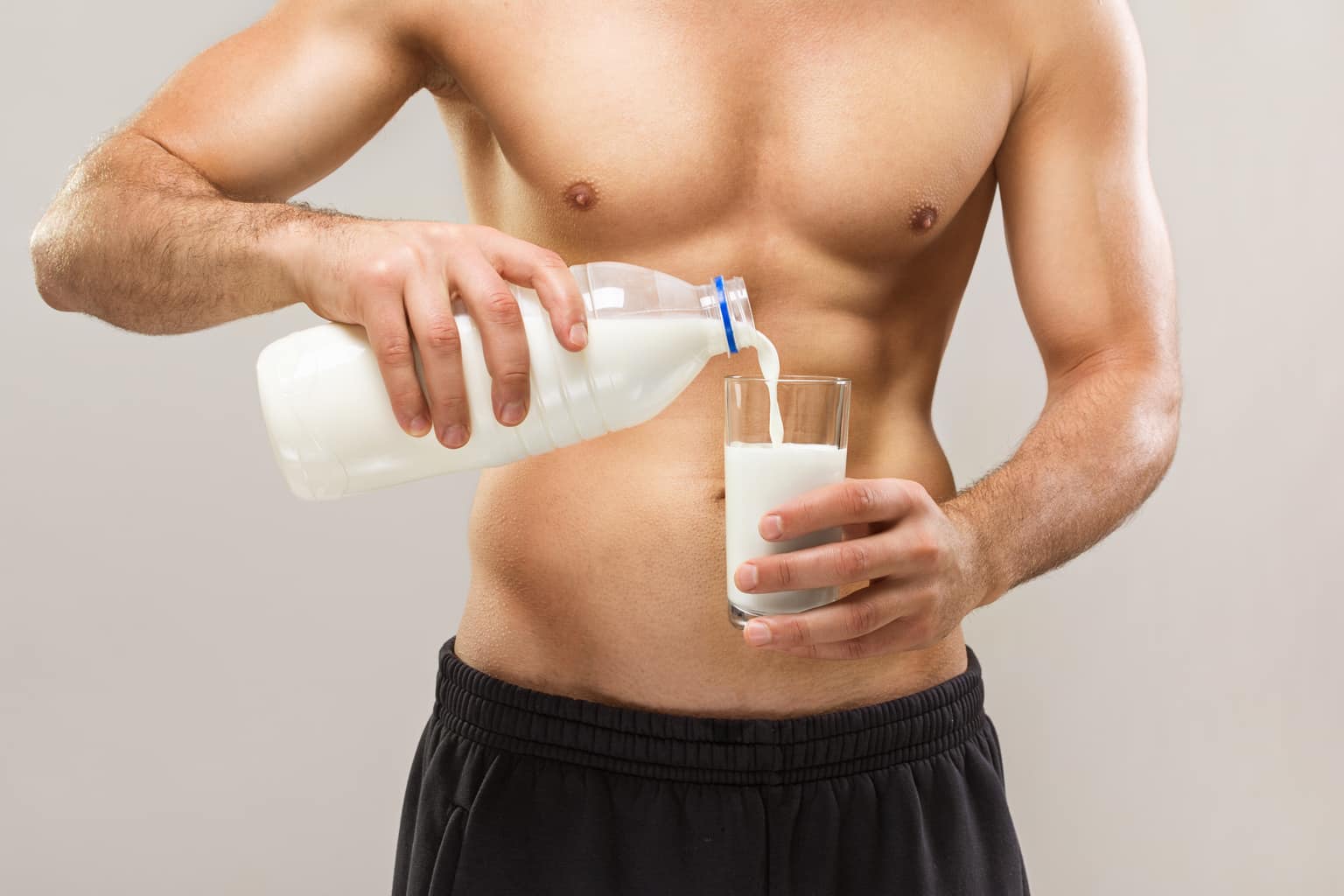
[cmamad id=”8343″ align=”center” tabid=”display-desktop” mobid=”display-desktop” stg=””]
This is a story about something I love, and I drink a lot of it.
Milk.
I still recommend milk a lot.
And cheese.
But you need the right kinds of milk.
Farmers have used growth hormone to increase milk production since 1937.
But it wasn’t until 1985 that it became commercially viable.
That’s when the FDA first approved the recombinant bovine growth hormone (rBGH).
Before then, growth hormone was too costly to use on dairy cows.
The only way to get it was to extract it from the pituitary glands of other cows.
But now they use genetically modified bacteria to make it in a dish.
[cmamad id=”8344″ align=”center” tabid=”display-desktop” mobid=”display-desktop” stg=””]
It works by signaling the production of insulin-like growth factor (IGF-1) in the liver.

Which in turn stimulates the udder to make more milk.
But the increased IGF-1 ends up in the milk.

Concentrations of insulin-like growth factor I (IGF-I) in the milk increased from 0.44 nmol/L during the 7 day preceding treatment to 1.6 nmol/L on day 7 of treatment.
And as a powerful peptide hormone, it stimulates growth in other places as well.
Growth hormone is a well-known sports doping agent banned by the NCAA and Olympic Committee.
This growth can be helpful if you are a bodybuilder, but too much can increase cancer risk.
We never saw these high levels in milk before 1985.
So we may need to revise previous cultural attitudes about dairy to compensate.
Especially since milk in the United States is proven to raise IGF-1 levels in humans.

Monsanto had told the FDA that it doesn’t survive digestion, but experiments prove otherwise.

Researchers noted an increase of IGF-1 in the milk group, with no change in the meat group.
As you can see, natural growth hormone levels are about 200 nanograms per milliliter.
But the levels vary in milk-drinking populations.

The concentration in milk is around 6,000 to 12,000 ng/L (.8–1.6 nmol/L).
This level is 30 to 60 times more concentrated than the average human serum level!
Using radioactively labeled IGF-1, Japanese researchers reported in 1997 that while only 9 percent of IGF-1 fed to mice ended up in the bloodstream, the figure jumped to 67 percent when the hormone was fed along with casein, the major protein in milk.
In the 50s, researchers discovered that rats with removed pituitaries were more resistant to chemically-induced cancer.
No pituitary gland means no growth hormone, and no GH means low IGF-1 and cancer risk.
Some tissues, like the breast and prostate, respond to IGF-1 more than other tissues.
Prostate, pancreatic, and breast cancers are considered hormone-dependent cancers.
Researchers have compared IGF-1 levels and prostate cancer risk.

A 1997 study of 152 cases of prostate cancer against 152 controls provides a case for a dose-dependent relationship.

These men were drinking US milk, where hormone levels are the highest.
Unless you are a weightlifter, too much extra IGF-1 may not be a good idea.
I personally still drink US milk, but I try to drink high quality pastured milk and avoid rbgh milk.
And there is some wonderful milk available if you look.
Europe, Canada, and Australia all have bans on recombinant growth hormone.
So you can avoid it by eating imported dairy.
Goat cheese, imported European cheese, and organic cheese will be lower in IGF-1.
And you can find some milk in the US that is fine too.

http://sci-hub.cc/https://www.cambridge.org/core/journals/journal-of-dairy-research/article/increased-secretion-of-insulinlike-growth-factor-i-into-milk-of-cows-treated-with-recombinantly-derived-bovine-growth-hormone/4D59C2D7B30C8D5CD4DAB6C2DE6D6C9F
High intakes of skimmed milk, but not meat, increase serum IGF-I and IGFBP-3 in eight-year-old boys
http://sci-hub.cc/http://www.nature.com/ejcn/journal/v58/n9/abs/1601948a.html
Plasma Insulin-Like Growth Factor–I and Prostate Cancer Risk: A Prospective Study
https://www.researchgate.net/profile/Michael_Pollak2/publication/13791392_Plasma_Insulin-Like_Growth_Factor-I_and_Prostate_Cancer_Risk_A_Prospective_Study/links/00b7d52a773a22ae01000000/Plasma-Insulin-Like-Growth-Factor-I-and-Prostate-Cancer-Risk-A-Prospective-Study.pdf
Seeds of Deception (Jeffrey Smith)
http://stopogm.net/sites/stopogm.net/files/SeedsDeception.pdf

Leave a Reply